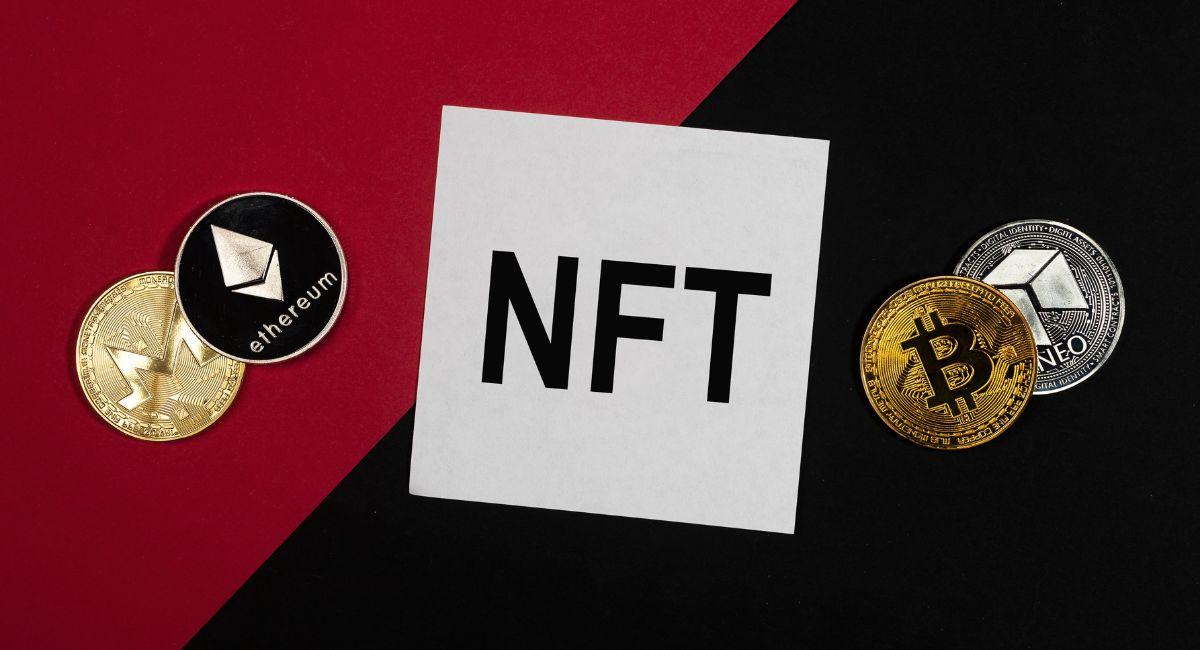Top 5 Shocking Ways Crypto Market Fluctuations Affect The NFT Market

The Non-Fungible Token (NFT) market has emerged as a revolutionary sector within the broader crypto market and blockchain ecosystem. NFTs are unique digital assets that represent ownership or proof of authenticity of a specific item or piece of content, such as digital art, collectibles, virtual real estate, and more. Unlike cryptocurrencies like Bitcoin or Ethereum, which are fungible and interchangeable, each NFT is distinct and cannot be replicated or divided.
The market has experienced explosive growth in recent years, driven by factors such as increased interest from collectors, artists, and investors, as well as advancements in blockchain technology and digital artistry. One of the key drivers of the market is the ability to tokenize and trade digital assets securely and transparently on blockchain networks, providing proof of ownership and provenance for both creators and buyers.
Digital artists, musicians, and creators are leveraging NFTs to monetize their work in new and innovative ways. By tokenizing their creations as NFTs, artists can sell them directly to collectors on marketplaces, bypassing traditional intermediaries and earning royalties on secondary sales. This has democratized the art world, allowing artists to reach a global audience and retain greater control over their intellectual property.
Collectors and investors are drawn to the market by the prospect of owning rare and unique digital assets with the potential for appreciation in value over time. It has sparked a frenzy of speculation and trading activity, with some high-profile sales fetching millions of dollars for digital artworks, virtual real estate, and collectible items.
NFT marketplaces serve as platforms for buying, selling, and trading, providing users with access to a wide range of digital assets and facilitating transactions through smart contracts and decentralized protocols. Some of the most popular marketplaces include OpenSea, Rarible, and Foundation, which offer a diverse selection across various categories and genres.
However, the NFT market also faces challenges such as issues of copyright infringement, plagiarism, and environmental concerns related to the energy consumption of blockchain networks. Despite these challenges, the market continues to evolve and expand, offering new opportunities for creators, collectors, and investors to participate in the digital economy and shape the future of art, entertainment, and ownership in the digital age.
Also, read- Top 10 Amazing Reasons Solana Tokens Are A Game Changer For NFTs
NFT in the crypto market

Non-fungible tokens (NFTs) have emerged as a disruptive force within the broader crypto market, offering unique opportunities for creators, collectors, and investors. They are cryptographic tokens that represent ownership or proof of authenticity of a specific item or piece of content, such as digital art, collectibles, virtual real estate, and more. Unlike cryptocurrencies like Bitcoin or Ethereum, which are fungible and interchangeable, each NFT is distinct and cannot be replicated or divided.
The market has experienced explosive growth in recent years, fueled by factors such as increased interest from collectors, artists, and investors, as well as advancements in blockchain technology and digital artistry. One of the primary drivers of the market is the ability to tokenize and trade digital assets securely and transparently on blockchain networks, providing proof of ownership and provenance for both creators and buyers.
Digital artists, musicians, and creators are leveraging to monetize their work in new and innovative ways. By tokenizing their creations as NFTs, artists can sell them directly to collectors on marketplaces, bypassing traditional intermediaries and earning royalties on secondary sales. This has democratized the art world, allowing artists to reach a global audience and retain greater control over their intellectual property.
Collectors and investors are drawn to the crypto market by the prospect of owning rare and unique digital assets with the potential for appreciation in value over time. It has sparked a frenzy of speculation and trading activity, with some high-profile sales fetching millions of dollars for digital artworks, virtual real estate, and collectible items. The ability to prove ownership and authenticity through blockchain technology adds a layer of scarcity and exclusivity to NFTs, driving demand among collectors and investors.
The marketplaces serve as platforms for buying, selling, and trading NFTs, providing users with access to a wide range of digital assets and facilitating transactions through smart contracts and decentralized protocols. Some of the most popular NFT marketplaces include OpenSea, Rarible, and Foundation, which offer a diverse selection across various categories and genres.
However, the NFT market also faces challenges such as issues of copyright infringement, plagiarism, and environmental concerns related to the energy consumption of blockchain networks. Despite these challenges, the NFT market continues to evolve and expand, offering new opportunities for creators, collectors, and investors to participate in the digital economy and shape the future of art, entertainment, and ownership in the digital age. As the NFT market matures, it is likely to see further innovation, regulation, and integration with traditional financial markets, opening up new avenues for growth and adoption in the cryptocurrency ecosystem.
All markets are forming blow off tops. The S&P500 is discovering new heights while economies around the world are fucked. Get ready for the last part of the crypto rally to new heights across the board. Take profits once #BTC is at $75K – $100K very soon. pic.twitter.com/q6h50P044T
— Magic Speed 🇨🇳 🇭🇰 🐂 (@MagicSpeed8888) February 23, 2024
Crypto market fluctuations affect the NFT Market

Crypto market fluctuations can have a significant impact on the NFT market due to several interconnected factors:
- Investor Sentiment: Investor sentiment in the broader cryptocurrency market often influences sentiment in the NFT market as well. When cryptocurrency prices are bullish and investors are optimistic about the market’s future prospects, they may be more willing to invest as well, leading to increased demand and higher prices for NFTs. Conversely, during periods of bearish sentiment or market downturns, investors may become more cautious, leading to decreased demand and lower prices for NFTs.
- Wealth Effect: The wealth effect describes how changes in the value of assets, such as cryptocurrencies, can impact consumer spending and investment decisions. When cryptocurrency prices are rising, investors may feel wealthier and more inclined to spend or invest. Conversely, when cryptocurrency prices are falling, investors may feel poorer and less inclined to allocate funds to NFTs, leading to decreased demand and lower prices in the market.
- Market Dynamics: The market is closely intertwined with the cryptocurrency market, and many NFTs are priced and traded in cryptocurrency denominations such as Ethereum (ETH) or Wrapped Bitcoin (BTC). Therefore, fluctuations in cryptocurrency prices can directly impact the valuation of NFTs denominated in those cryptocurrencies. For example, if the price of Ethereum drops significantly, the value of NFTs priced in ETH may also decrease, even if their USD value remains constant.
- Speculative Activity: The market has attracted a significant amount of speculative activity, with investors buying and selling NFTs with the expectation of profiting from price appreciation. During periods of heightened speculation in the broader cryptocurrency market, speculative activity in the market may also increase, leading to greater volatility and price fluctuations in prices.
- Cross-Market Correlation: There is evidence to suggest that the market is correlated with the broader cryptocurrency market to some extent. While NFTs represent unique digital assets with their own market dynamics, they are still part of the broader cryptocurrency ecosystem and can be influenced by trends and developments in the cryptocurrency market.
Overall, while the market may exhibit some degree of independence from the broader crypto market, fluctuations in cryptocurrency prices can still have a significant impact on the valuation, demand, and trading activity of NFTs. As the cryptocurrency market continues to evolve and mature, so too will its relationship with the market, shaping the future of digital ownership, art, and collectibles.
Conclusion
In conclusion, the relationship between crypto market fluctuations and the market is intricate and multifaceted. Fluctuations in cryptocurrency prices can exert a notable influence on the sentiment, demand, and valuation of NFTs, reflecting the interconnected nature of these markets within the broader digital asset ecosystem.
Investor sentiment, driven by changes in cryptocurrency prices, often impacts the willingness of investors to allocate funds to NFTs. Bullish market conditions tend to spur optimism and increased investment, while bearish sentiments may lead to caution and reduced demand for NFTs.
Moreover, the wealth effect plays a crucial role, as changes in cryptocurrency wealth can influence consumer spending and investment decisions in the market. When cryptocurrency prices rise, investors may feel more affluent and inclined to invest, whereas declining prices may dampen enthusiasm and investment.
The dynamics of the market are also closely intertwined with the broader cryptocurrency market, with many priced and traded in cryptocurrency denominations. Consequently, fluctuations in cryptocurrency prices directly impact the valuation of priced in those currencies, contributing to volatility in the market.
Furthermore, speculative activity in both markets can exacerbate volatility, as investors may engage in speculative trading strategies across cryptocurrency and assets. This heightened speculative activity can lead to increased price fluctuations and trading volumes in both markets.
Despite these interconnected dynamics, it’s essential to recognize that the market possesses unique characteristics and market dynamics of its own. While influenced by cryptocurrency market fluctuations, the market also reflects trends in digital ownership, art, and collectibles, with its own distinct investor base and market drivers.
Overall, while fluctuations in the cryptocurrency market undoubtedly impact the market, the relationship between the two markets is complex and evolving. As both markets continue to mature, understanding the interplay between cryptocurrency prices and valuations will be essential for investors, traders, and participants seeking to navigate the digital asset landscape effectively.




























































